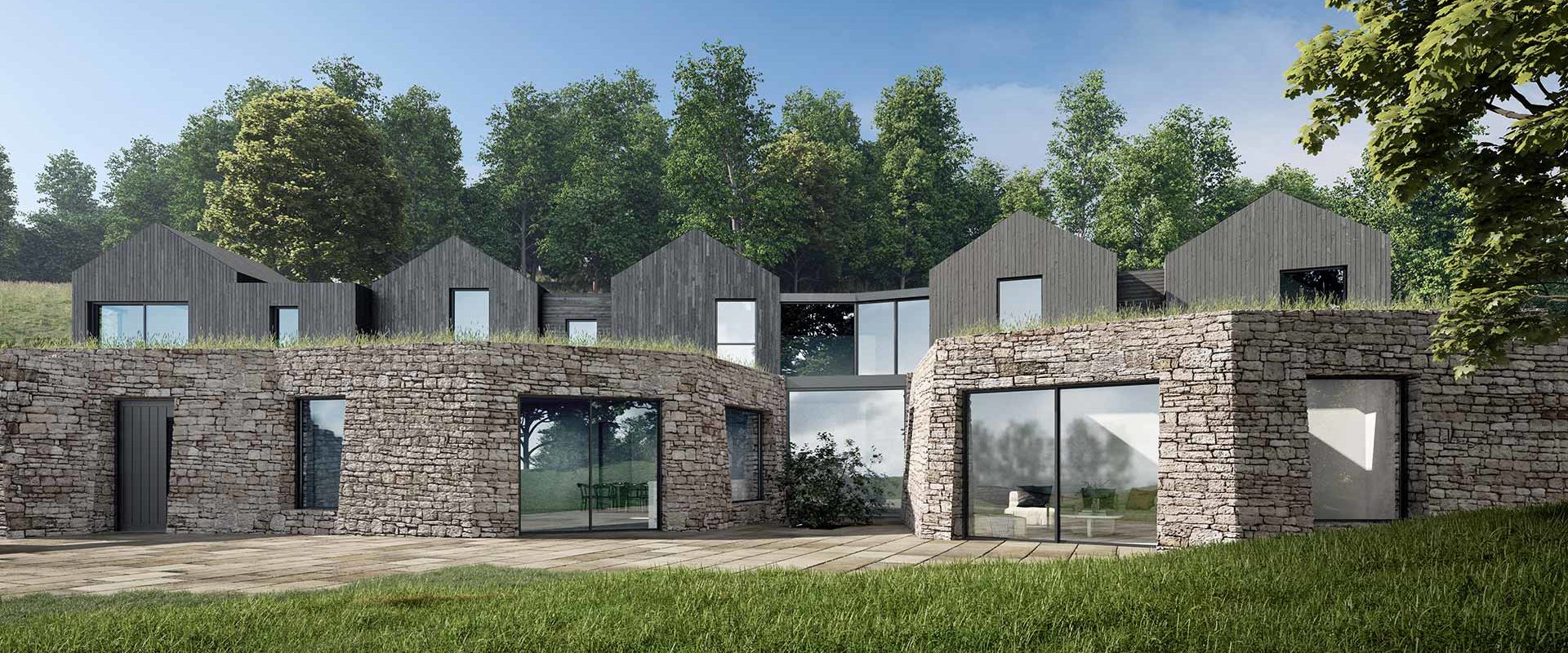We’re working with a family to create their dream home in Bury.
The clients bought the land, which is on a steep slope, over 10 years ago and approached us to start exploring a design for a light and spacious home that would accommodate their growing family.
We were first contacted by Maybern a planning consultancy working on behalf of the clients, for some advice. They had heard of our past success in achieving planning permission for tricky sites, specifically for NPPF Para 79 Projects. This is a route we discussed for this project. However, it was agreed with the local authority that the site isn’t isolated enough for a Paragraph 79 home. They did agree that meeting the requirements of Paragraph 79 will likely be sufficient to demonstrate the special circumstances needed to build in the green belt.
Our starting approach was to design a Passivhaus home. Although not integral to the Paragraph 79 process, using the Passivhaus design principles will mean we can create a home that uses low energy to run, is highly comfortable and healthy to live in.
This started with a site appraisal and design workshop with the clients, planning consultant and landscape architect, TPM Landscape.
We were then able to develop an initial concept design.
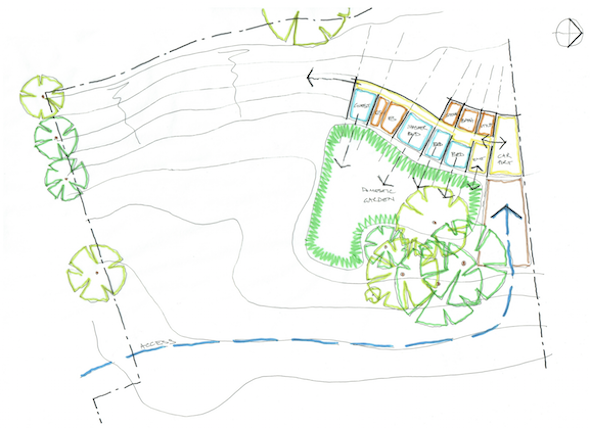
The initial sketch design was an “upside-down” house that placed the bedrooms in a heavy plinth set around a sheltered garden space.

The first floor was then a set of lightweight sheds that reflected the sheds of local smallholdings and that took advantage of the diverse views across the landscape.
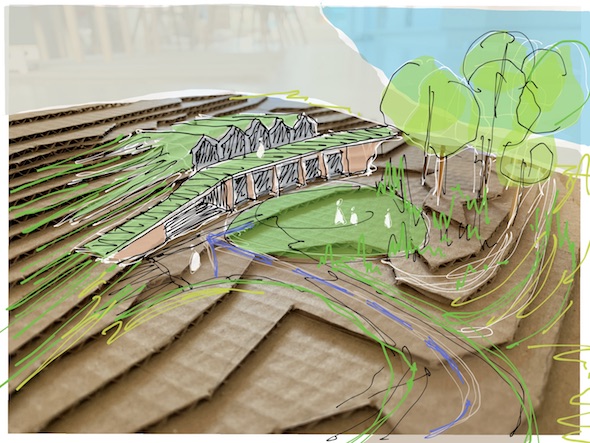
Following discussions with the client, we switched the living accommodation to the ground floor, embedded in the slope of the hill with more rationalised sheds for bedrooms above.
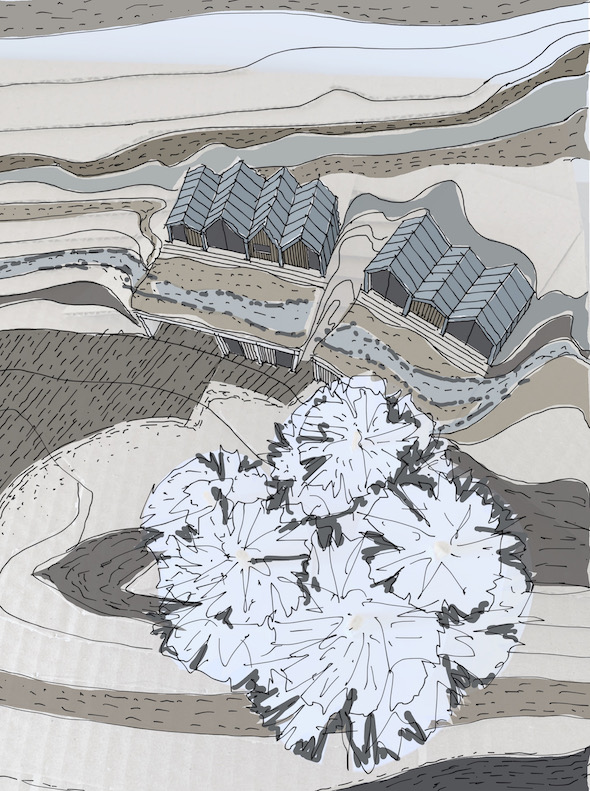
The simple form and rational sheds aimed to make the building efficient thermally.
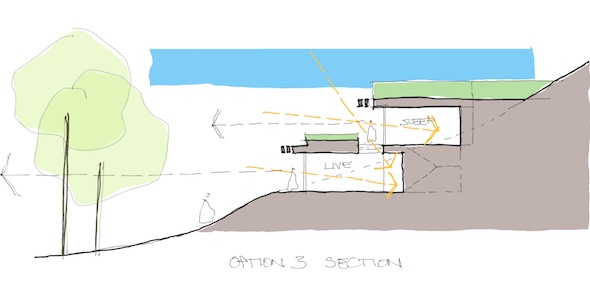
The clients highlighted light, space and a strong connection to the outdoors as important elements for the home.
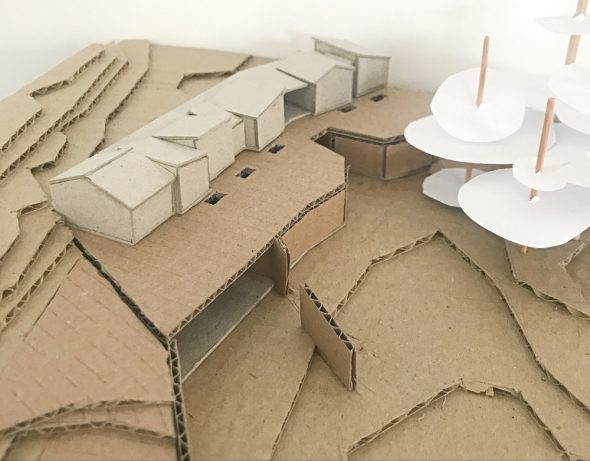
To echo the sheds found in surrounding fields we agreed our ‘sheds’ needed to vary in form and roof pitch. Mo developed the physical model to further explore ideas.

We then Developed a 3D model following a successful design review.
We found the design review process a really positive one. It challenged us to push our own concepts further. We made the base of the building heavier to become a rock face in the field.
Paul, Jess and Mo developed the sheds to be more fragmented, individual and of simpler materiality. This raised performance challenges but we’re still pushing for the home to achieve Passivhaus standard.
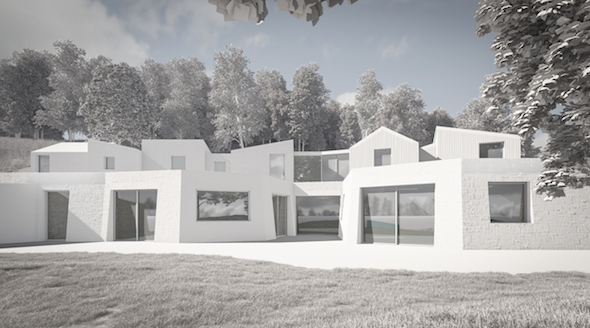
As we were finalising the layout with the clients, we commissioned clay renders to refine the massing and form.
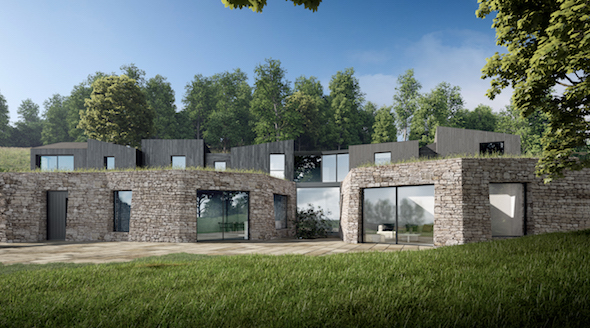
The sharpness of the shed forms and their simple materiality, set against the base of the rough stone was further developed through visualisations.
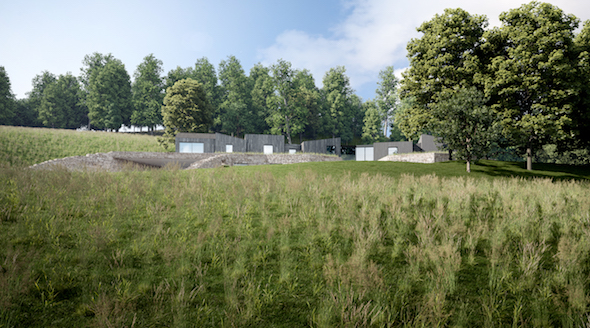
“This project shows the success of a collaborative design approach”, says Paul.
“Working with the clients, planning consultant and landscape architect from the outset has led to a beautiful design. It feels like it belongs in the landscape. The addition of 3D visuals from Steve Banks has given us the ability to express our vision with images we’d struggle to produce in-house.
